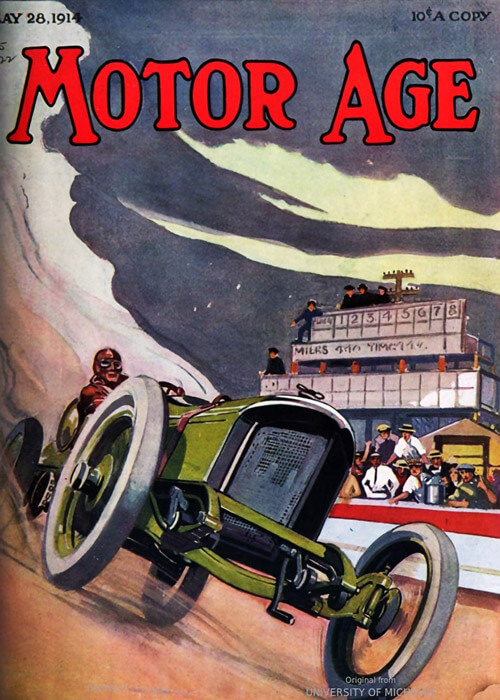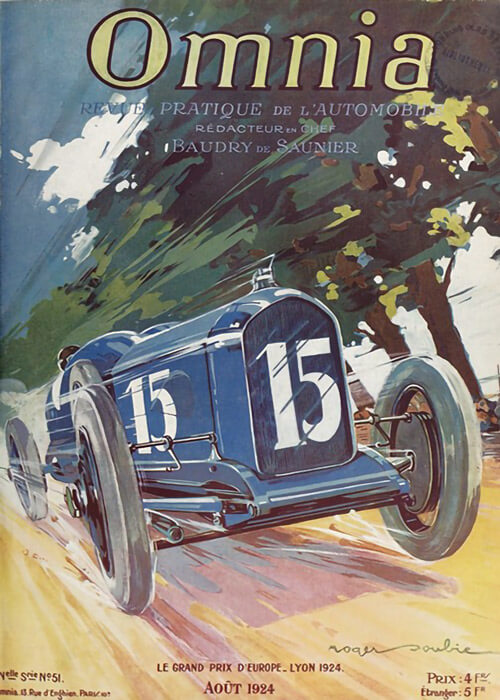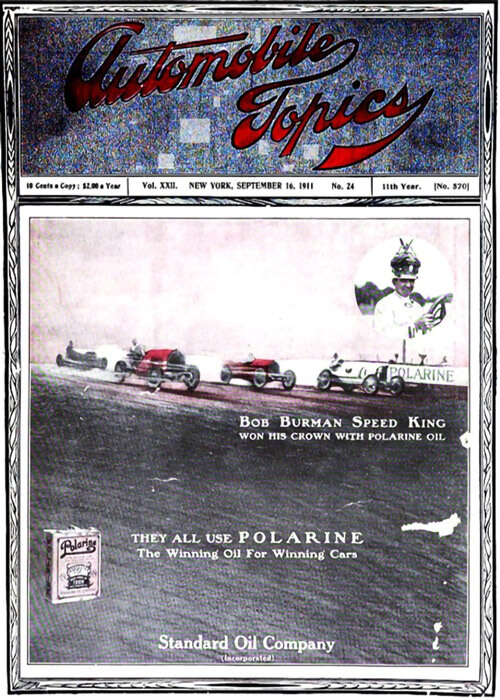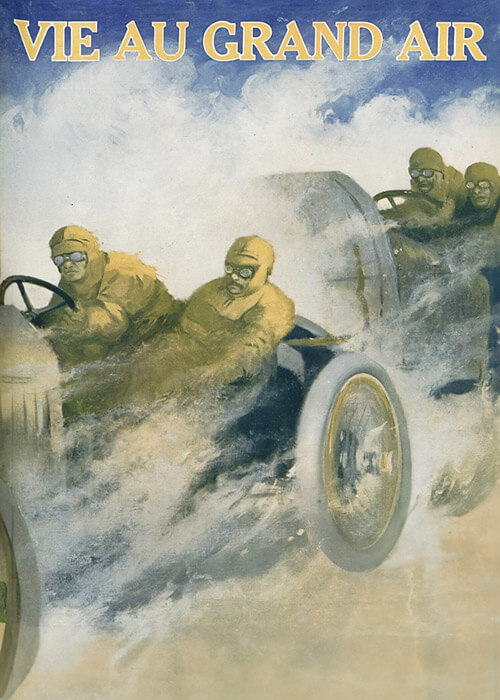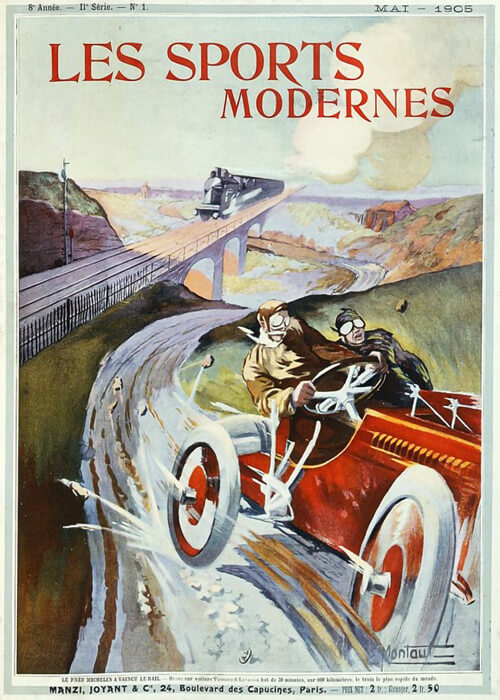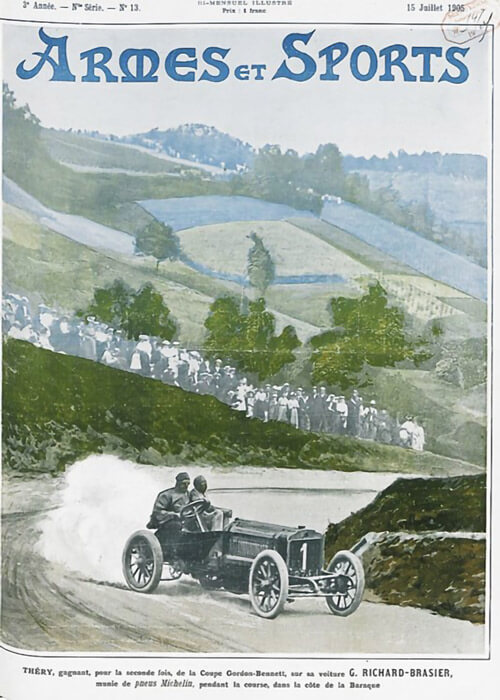Shortly after the last 1910 races, the Indianapolis Speedway management made a first announcement that next year only one large race event was planned with a „lure o‘ gold“ as prize money. Then in a second announcement, a race distance of 500 miles was mentioned. History has shown that this was a good; no, the best decision.
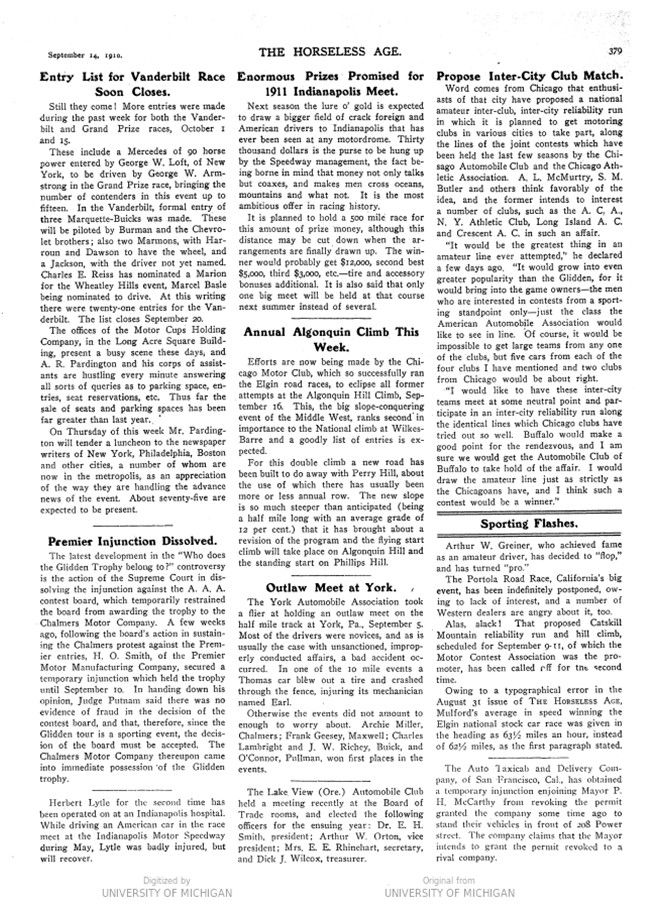
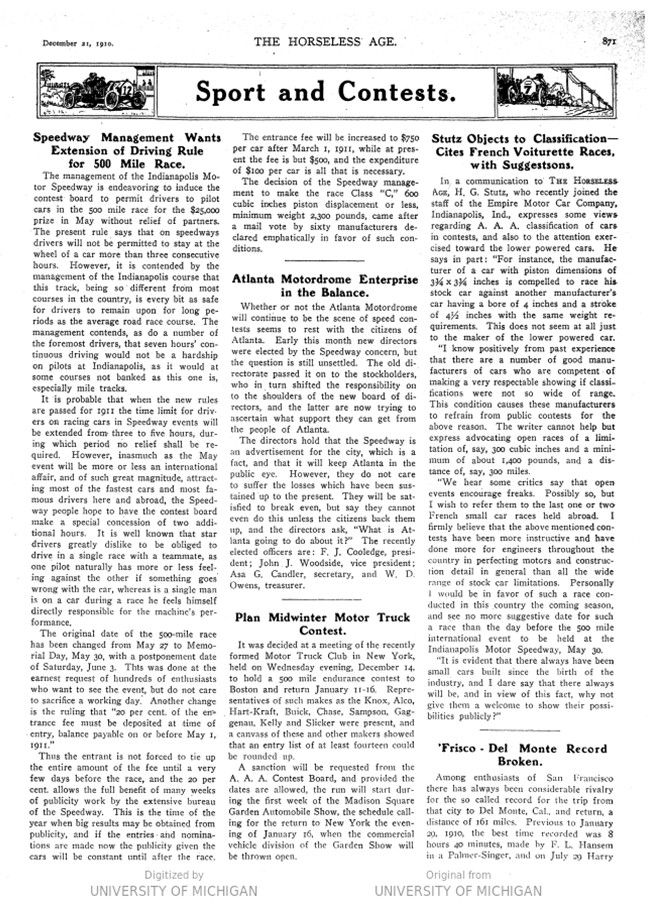
Text and jpegs by courtesy of hathitrust.org www.hathitrust.org, compiled by motorracinghistory.com
The Horseless Age, Vol. 26, No. 11, September 14, 1910, page 379.
—————————
Enormous Prizes Promised for 1911 Indianapolis Meet.
Next season the lure o‘ gold is expected to draw a bigger field of crack foreign and American drivers to Indianapolis that has ever been seen at any motordrome. Thirty thousand dollars is the purse to be hung up by the Speedway management, the fact being borne in mind that money not only talks but coaxes, and makes men cross oceans. It is the most ambitious offer in racing history.
It is planned to hold a 500 mile race for this amount of prize money, although this distance may be cut down when the arrangements are finally drawn up. The winner would probably get $12,000, second best $5,000, third $3,000, etc. — tire and accessory bonuses additional. It is also said that only one big meet will be held at that course next summer instead of several.
The Horseless Age, Vol. 26, No. 29, December 21, 1910, page 871.
Sport and Contests.
—————————
Speedway Management Wants Extension of Driving Rule for 500 Mile Race.
The management of the Indianapolis Motor Speedway is endeavoring to induce the contest board to permit drivers to pilot cars in the 500 mile race for the $25,000 prize in May without relief of partners. The present rule says that on speedways drivers will not be permitted to stay at the wheel of a car more than three consecutive hours. However, it is contended by the management of the Indianapolis course that this track, being so different from most courses in the country, is every bit as safe for drivers to remain upon for long periods as the average road race course. The management contends, as do a number of the foremost drivers, that seven hours‘ continuous driving would not be a hardship on pilots at Indianapolis, as it would at Some courses not banked as this one is, especially mile tracks.
It is probable that when the new rules are passed for 1911 the time limit for drivers on racing cars in Speedway events will be extended from three to five hours, during which period no relief shall be required. However, inasmuch as the May event will be more or less an international affair, and of such great magnitude, attracting most of the fastest cars and most famous drivers here and abroad, the Speedway people hope to have the contest board make a special concession of two additional hours. It is well known that star drivers greatly dislike to be obliged to drive in a single race with a teammate, as one pilot naturally has more or less feeling against the other if something goes wrong with the car, whereas is a single man is on a car during a race he feels himself directly responsible for the machine’s performance.
The original date of the 500-mile race has been changed from May 27 to Memorial Day, May 30, with a postponement date of Saturday, June 3. This was done at the earnest request of hundreds of enthusiasts who want to see the event, but do not care to sacrifice a working day. Another change is the ruling that “20 per cent of the entrance fee must be deposited at time of entry, balance payable on or before May 1, 1911.”
Thus the entrant is not forced to tie up the entire amount of the fee until a very few days before the race, and the 20 per cent allows the full benefit of many weeks of publicity work by the extensive bureau of the Speedway. This is the time of the year when big results may be obtained from publicity, and if the entries and nominations are made now the publicity given the cars will be constant until after the race.
The entrance fee will be increased to $750 per car after March 1, 1911, while at present the fee is but $500, and the expenditure of $100 per car is all that is necessary.
The decision of the Speedway management to make the race Class “C,” 600 cubic inches piston displacement or less, minimum weight 2,300 pounds, came after a mail vote by sixty manufacturers declared emphatically in favor of such conditions.
